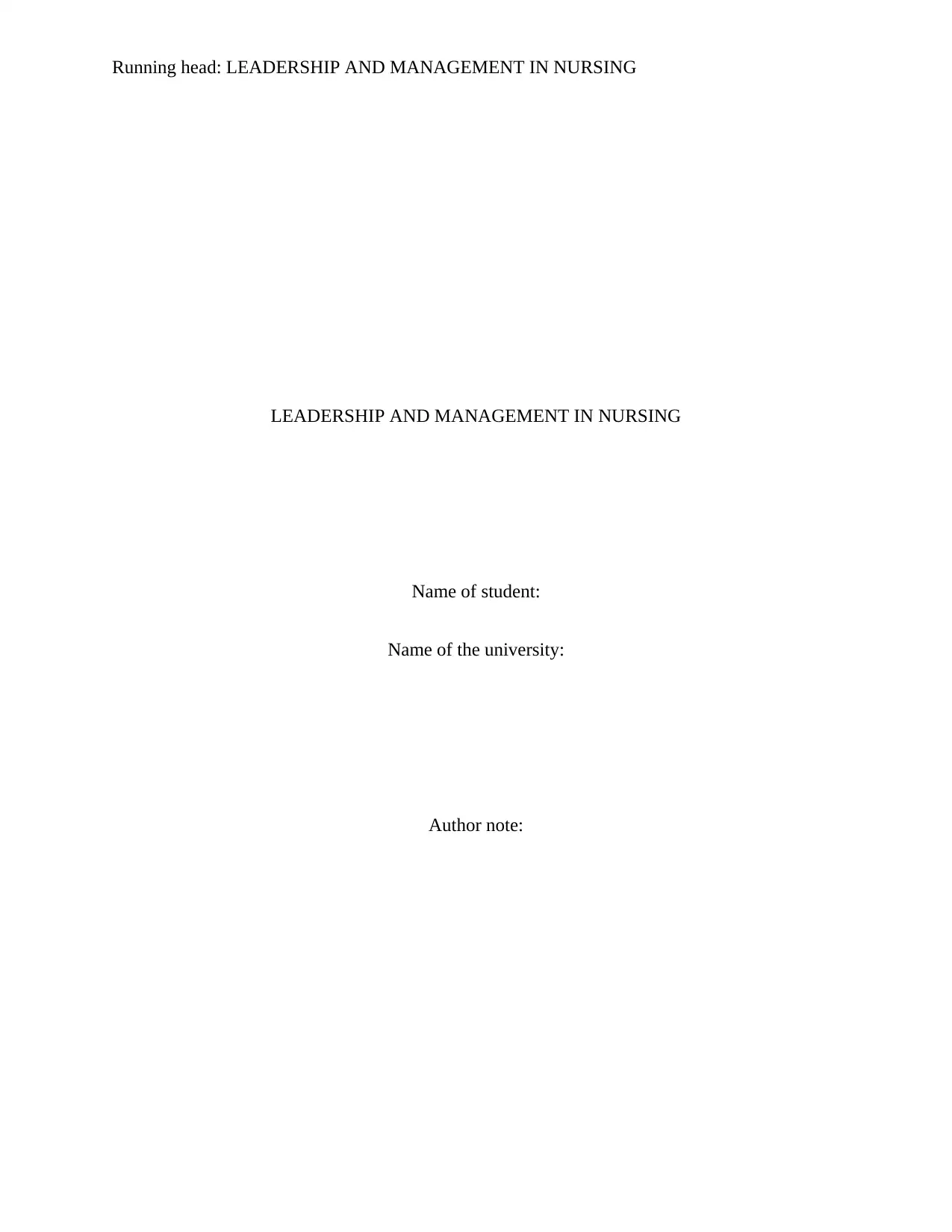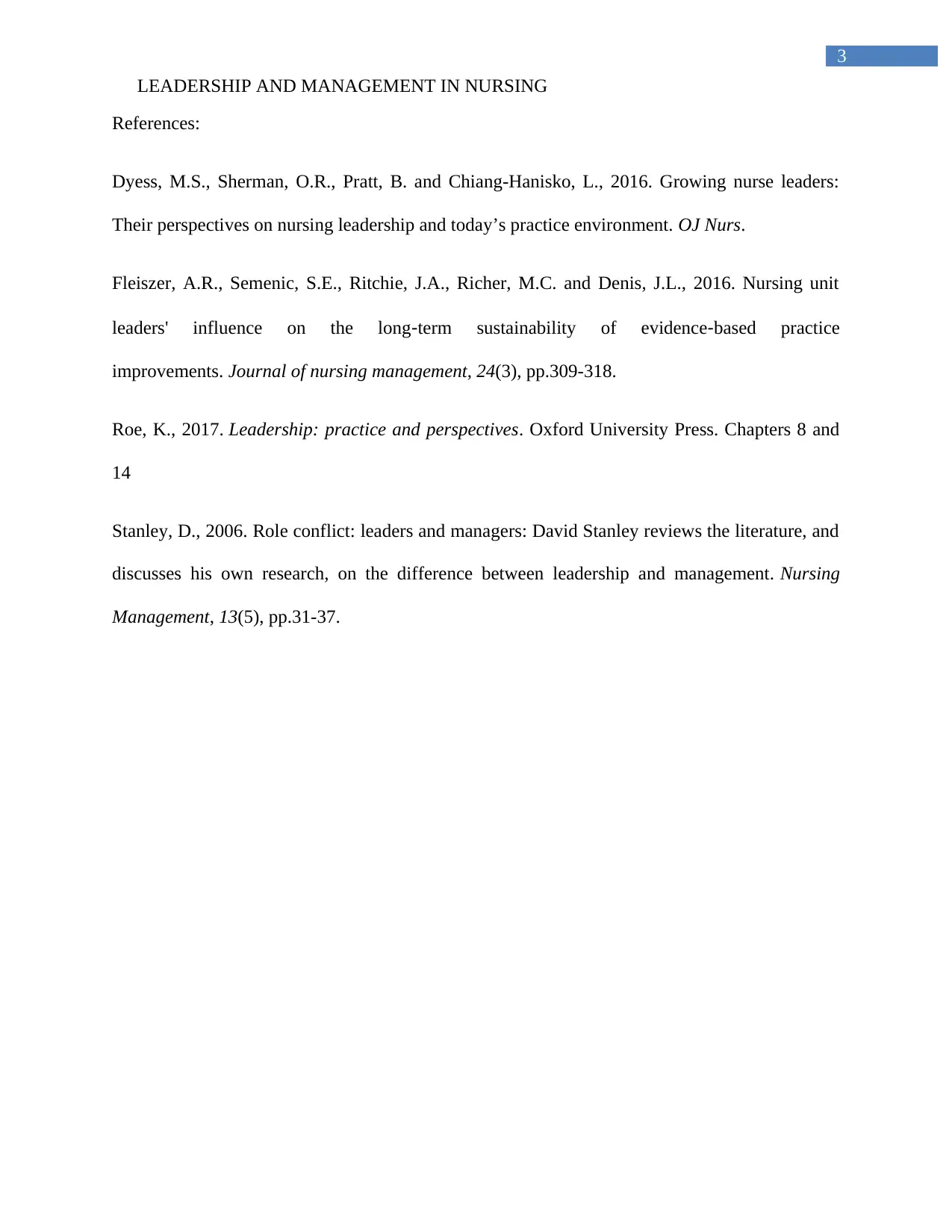Leadership and Management in Nursing: Attributes and Functions
VerifiedAdded on 2020/05/16
|4
|862
|171
Essay
AI Summary
This essay delves into the critical aspects of leadership and management within the nursing profession. It defines nursing leadership as the ability to develop a vision, align teams with organizational goals, and foster excellence among healthcare professionals. The essay identifies key attributes of effective leadership, such as credibility and a visionary approach, highlighting the importance of anticipating and managing change. It explores the functions of leaders, including motivating team members and promoting patient satisfaction. Furthermore, the essay distinguishes between leadership and management, emphasizing that leaders set directions while managers focus on planning and stability. The discussion underscores the potential negative impacts of failing to differentiate these roles, leading to conflicts, confusion, and diminished clinical effectiveness, ultimately affecting patient care. The essay concludes by stressing the importance of careful consideration when appointing individuals to leadership positions in nursing, recognizing the direct impact on patient health and satisfaction. References include key research on nursing leadership and management styles.
1 out of 4











![[object Object]](/_next/static/media/star-bottom.7253800d.svg)